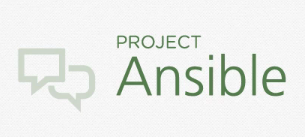 Marking a major milestone in the roll-out of its next generation of open, unified communications (UC) hardware, software and services, Siemens Enterprise Communications has begun to unveil selected features of Project Ansible. Taking its name from the instantaneous or “superluminal” communications device conceived by Ursala Le Guin in the novel “Rocannon’s World” (published in 1966), this Ansible comes largely from the imagination of frog design inc, an industrial design powerhouse with a pedigree that dates back to the first Apple computers. It is a platform that brings together communications (voice, data and video), collaboration, aggregation/archiving, search, social networking and business process automation and presents everything to users “on a single pane of glass.”
Marking a major milestone in the roll-out of its next generation of open, unified communications (UC) hardware, software and services, Siemens Enterprise Communications has begun to unveil selected features of Project Ansible. Taking its name from the instantaneous or “superluminal” communications device conceived by Ursala Le Guin in the novel “Rocannon’s World” (published in 1966), this Ansible comes largely from the imagination of frog design inc, an industrial design powerhouse with a pedigree that dates back to the first Apple computers. It is a platform that brings together communications (voice, data and video), collaboration, aggregation/archiving, search, social networking and business process automation and presents everything to users “on a single pane of glass.”
For the past two years, frog and Siemens have been busy fulfilling on the vision of extending that single pane of glass user experience “across virtually all devices and designed to extend beyond the promises of unified communications (UC) aggregating across virtually every channel, including social software, business applications, video, text, analytics, and traditional voice communication.” In other words, The Project is all about breaking down traditional network boundaries as well as organizational silos.
There’s a major dose of WebRTC baked in as well. Real-time communications through a browser is at the very heart of what product management calls “six vectors of differentiation” for The Project. These are:
- Usability – which applies to simple onboarding and a user interface that requires no manual
- Persistence – meaning that all conversations and content are stored and aggregated for sharing, analytics and collaboration
- Single Window – on multiple communications tools, so that the same info can be seen, shared, operated upon whether it involves a smartphone, tablet, PC or deskphone
- Analytics – which pervades across all aspects of a business, such as finding colleagues with subject matter expertise, understanding user preferences and habits and generally supporting constant adaptation and machine learning.
- Integration into the business processes – a major part of Siemens investment protection story revolves around Project Ansible’s ability to integrate deeply with existing back-office functions and even to work with popular cloud-based services like CRM or database processing.
- APIs and SDKs – making Project Ansible “open” to third parties bringing their own solution into the enterprise infrastructure.
That’s a very broad set of differentiators, and it means that Siemens has a very ambitious roadmap, targeting general availability by the 2nd half of 2014. In the meantime it is gearing up with what it calls a very clear migration path for existing customers. It is also cultivating relationships with an impressive list of channel partners that includes Deutsche Telekom, Telefonica, IBM, Microsoft and others.
The company will also be changing to a “value-based selling” approach designed to appeal to specific vertical markets. And, yes… there will be a flavor for Contact Centers and it seems like an ideal platform for self-service culminating in a person-to-person conversation when required.
Updates and insights from Siemens Enterprise are available here. (http://www.siemens-enterprise.com/projectansible/us). Visit early and often.
Categories: Articles

 2025 Conversational AI Intelliview: Decision-Makers Guide to Self-Service & Enterprise Intelligent Assistants
2025 Conversational AI Intelliview: Decision-Makers Guide to Self-Service & Enterprise Intelligent Assistants  Why Is ElevenLabs Building a Conversational AI Stack?
Why Is ElevenLabs Building a Conversational AI Stack?  Talk to the Web: How NLWeb Opens Conversational Access to Site Content
Talk to the Web: How NLWeb Opens Conversational Access to Site Content  Battling ‘Botenfreude’: The Power of People and Policy
Battling ‘Botenfreude’: The Power of People and Policy